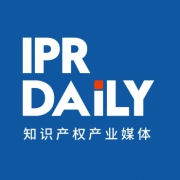Did not receive verification mail? Please confirm whether the mailbox is correct or not Re send mail

IPR Daily
- 2017-04-14 10:44:30
The Web Is At A Crossroads – New Standard Enables Copyright Enforcement Violating Users’ Rights
The World Wide Web today stands at a crossroads, as its standards body, the World Wide Web Consortium (W3C), considers the demand of big content providers to provide them with the facility to be able to control user devices for ensuring that their content is not copied. This facility is called the Encrypted Media Extension (EME), which enables these companies to put digital rights management (DRM) into the user’s browser, whether the user wants it or not, and whether such restrictions are as per the user’s local national laws or not.
A global civil society coalition, Just Net Coalition, has issued an open letter to Sir Tim Berners-Lee, inventor of the Web, and Director of W3C, urging him to veto the EME proposal, which is within his rights to do. The press release of JNC asserts: “The W3C’s support of DRM will lead to a new form of digital colonialism, as W3C’s EME has installed a ‘black box’ of code to enforce dangerous US laws like the Digital Millennium Copyright Act on over a billion browsers globally, without user consent or respect for local laws.”
UNESCO’s Assistant Secretary General earlier wrote to Sir Tim and W3C on the same issue. W3C has responded to this letter. The Association for Progressive Communications also has issued a statement on the subject.
Sir Tim, it must be remembered, has taken a strong stand in the past against creation of “walled gardens” on the Internet by major Internet corporations. More recently, in March 2017, he listed three key problems that have emerged with the Web that he had invented – people have lost control over their data, fake news and non-transparent political advertisement. The JNC’s open letter commends these stands, but asks: why when Sir Tim takes such strong stand against issues with regard to which he has only a persuasive role, would he not take a stand against allowing corporations to use a standard to control content related rights of users, something over which he has absolute control as the head of W3C?
The response of W3C and Sir Tim to such exhortations, in general, goes in the following direction: the problems that are being mentioned with the proposed standard may have some justification but these won’t go away if the standard is not instituted. The big content and Internet companies are so powerful and dominant today that even without the proposed web standard they will be able to get their way. On the other hand, if the new standard is instituted, it can be ensured that the content controlled by these companies does not leave the Web, which strengthens the Web. Further, by keeping these practises on the Web, there may be means to lessen their evil. (This must be seen in the background that major browsers like Internet Explorer and Chrome are controlled by companies backing EME, and that, in the US, over 30 percent of the Internet traffic is of content by a single provider, Netflix, while YouTube has about 15 percent.)
The JNC statement goes to considerable length to respond to such justifications. In their response to the UNESCO letter, W3C claims that if EME is not made a Web standard, most movie/ TV style packaged content will migrate to native apps. This, they apparently fear, will weaken the Web. The JNC statement argues that the Internet/ Web was never meant to be for broadcast content. It was created as its alternative, for p2p content, where both sides in a ‘content’ relationship, have the same rights and power. If broadcast content goes to native apps, it will not weaken the primary logic and use of the Web. Trying to retain broadcast content, on the terms of its owners, would surely weaken the Web, perhaps fatally, as far its basic open and egalitarian nature is concerned.
The possibility of “sand-boxing” the EME-DRM arrangement within the browser, which is promoted as minimising the third-party control over the user’s device, is only a partial mitigation. Once access to such control is provided, and security researchers not allowed to examine the installed DRM – a demand that W3C process has refused – there is no guarantee what such controls can actually do. These can even be exploited for political purposes. Whether similar things can be done, perhaps in worse ways, by native apps, that broadcast content may migrate to in default of EME, is a problem that the providers of these app will be responsible for. W3C should focus on protecting its own application, the Web, which today is at the centre of the Internet.
As long as a really open and user-centric design of the Web is maintained, it should not matter much if broadcast content develops alternative means to reach its customers. TV and movie distribution was never expected to die because of the Internet. But in trying to accommodate its demands, the web will lose its original purpose. The Web should be maintained as primarily a p2p platform, and it need not spoil itself trying to become a tool for propriety broadcasting. If there is a conflict between the two models, as W3C faces with the EME standard, it should be obvious which model it should side with.
While a broadcaster like Netflix may, in the circumstances of denial of EME, like to migrate to a different content distribution method, it won’t be so easy for YouTube, for instance, to leave the web, because it relies a lot on the hyperlinks on the web for content discovery and cross-linking. This is a key different between the broadcast model and the Internet/ Web model. This key difference provides the benefits of commons for those who are ready to play by the rules of the commons. There will always be means for content distribution that are controlled by big players, and work on their terms. What is needed is to protect the alternatives, that are commons- and people-centric, and not succumb to the pressure from dominant forces.
The JNC letter argues that the purpose of a standards body is to uphold the interests of the common people and it should not be dictated by powerful corporations. It should not follow the way of continuous accommodation, under the threat that big players can abandon a particular standard, and thus weaken it – which has become the routine way that these players overwhelm Internet standards development today. Commercial players have to be regulated and constrained by standards developed in public interest, and not the other way around.
Commenting on this issue, the Internet pioneer Louis Pouzin, says; “Institutional standards should not contain elements pushed in by lobbies, since they are detrimental to public interests. Of course lobbies have financial and political means to ignore or distort standards in their products, but they want more. They need the guarantee of a reputable standard institution or outstanding individuals to boost the legalization of their marketing strategy. Resisting lobbies pressure is the name of the game for keeping a respected reputation.”
Source: IPWatch
Editor: Camila (camila@iprdaily.com)
- I also said the two sentence
- Also you can enter 140words
 TOP IPR U.S. Lawyers 10 & Firms 10 Selection Officially Launched by IPR Daily
TOP IPR U.S. Lawyers 10 & Firms 10 Selection Officially Launched by IPR Daily WIPO Global Innovation Index 2025: China Enters Top 10
WIPO Global Innovation Index 2025: China Enters Top 10 Singapore ranks 5th in the 2025 Global Innovation Index; climbed two spots in Innovation Outputs
Singapore ranks 5th in the 2025 Global Innovation Index; climbed two spots in Innovation Outputs Federal Circuit lacks jurisdiction over award that doesn’t raise issue of patent law
Federal Circuit lacks jurisdiction over award that doesn’t raise issue of patent law


